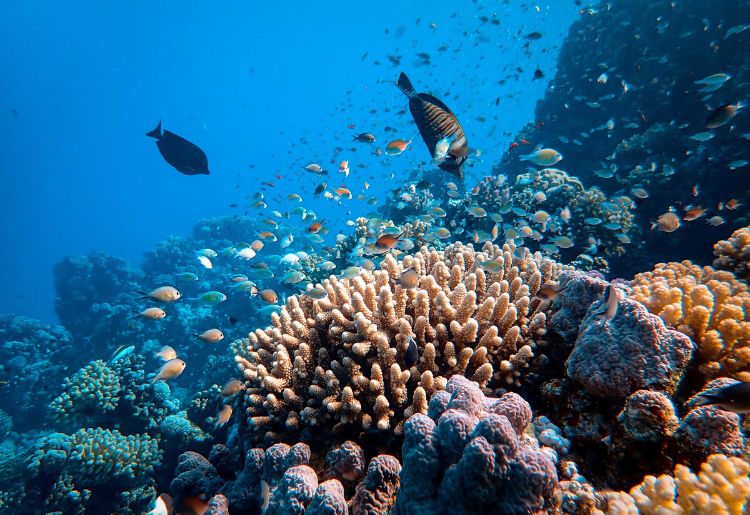Scuba diving in Anguilla is an ideal way to experience the awesome underwater world around the island. There is a variety of dive sites that consist of colourful reefs and wrecks which can be explored by beginner divers and experienced divers. It has been long said that the island is not seen as a scuba diving destination. However, it provides one of the most thrilling scuba diving experiences in the Caribbean.
The adventures are endless and fulfilling when diving in Anguilla. The island has various dive sites, each with their own special attributes and divers who visit the island always comment on how great the diving is. These accolades can be attributed to the health of the underwater ecosystem, the diverse marine life, and beautiful beaches all around the island. If you are planning a scuba diving holiday in Anguilla, make sure that you know:
- How to get to Anguilla
- The best time to visit the island
- Where the popular dive sites are located
- The types of marine life around Anguilla
- How you can practice safe scuba diving

How to Get to Anguilla
Anguilla is a small island in the Eastern Caribbean. It is in the vicinity of Puerto Rico, Antigua and Barbuda and Saint Martin and sits at the top of the Leeward Islands chain. The island is easily accessible by sea or air. All guests who enter Anguilla by sea or air have to clear Customs and Immigration.
Guests who prefer to travel by air, have several options. The island receives year-round direct flights from Miami and Toronto, and seasonal direct flights from Montreal. Additionally, connections are available to the island’s Clayton J. Lloyd International Airport via Puerto Rico, St. Maarten, and Antigua and Barbuda.
Alternatively, guests who want to travel by sea from a neighbouring island can do so via ferry. There are daily ferry services from St. Martin and Sint Maarten. There are also private boat services to the island. One of the companies that offers private charters to Anguilla is Calypso Charters.
Best Time for Scuba Diving in Anguilla
The best time to scuba dive in Anguilla is whenever you feel like going. The island is a year-round diving destination with waters that range from 26 degrees (C) in the cool months to 30 degrees (C) in warmer months. If you travel during the high season months between December and April, you will more activity on the island. During low season – May to November, there are more chances for tropical weather and rain and as a result visibility may be impacted.
Popular Dive Sites in Anguilla
There are over 30 beaches in Anguilla and almost all of them offer some opportunities for scuba diving. However, the most popular dive sites are those close to or in marine parks. Because of government-imposed protections in the underwater marine parks, marine life is thriving. Some of the restrictions are no anchoring zones, beach protection acts that restrict building on the sea floor, and fishing legislation. The best diving sites in Anguilla are Stoney Bay Marine Park, Prickly Pear Cays, Dog Island Wall, Frenchman Reef, Blowing Rock, Scrub Island, Anguillita Reef, Chikuzen Wreck, The Wall, and Little Bay.

Wrecks in Anguilla
Many of the dive sites in Aruba are home to shipwrecks. These historic vessels are an integral part of the biodiversity that exists in the water. There are at least six wrecks, each with its own unique story and a place in history. The Meppel Wreck, which lies 80 feet below the surface of the Caribbean Sea, was once a battleship for the British. The Commerce Wreck is the former Commerce which was destroyed by Hurricane Klaus in 1984. There is also the Sarah Wreck, which is the largest wreck on the island. She too was destroyed by hurricane Klaus in 1984. These wrecks are now valuable artificial reefs that attract several species of fish.
Marine Life in Anguilla
Divers who have visited dive sites around Anguilla, especially those with shipwrecks, have seen a variety of marine life. There are various species of fish, reptiles, crustaceans, and coral. Some of the key marine and fish species in Anguilla are:
Turtles: Hawksbill Turtles, Green Turtles
Lobsters: Caribbean Spiny Lobster, Spotted Spiny Lobster
Crabs: Red Eye Sponge Crab, Atlantic Ghost Crab,
Corals: Brain Corals, Star Corals, Branching Corals, Sea Fans, Sea Rods
Eels: Spotted Moray Eel, Garden Eel
Worms: Christmas Worm, Bearded Fire Worm, Magnificent Feather Duster, Yellow Fan Worm
Groupers: Nassau Grouper, Mutton Grouper, Graysby, Red Hind, Rock Hind, Coney, Black Grouper, Tiger Grouper, Yellowfin Grouper, Yellowmouth Grouper, Yellowfin Grouper, Goliath Grouper
Parrotfish: Striped Parrotfish, Redband Parrotfish, Stoplight Parrotfish, Princess Parrotfish, Queen Parrotfish
Wrasses: Bluehead Wrasse, Yellowhead Wrasse, Slippery Dick Wrasse, Clown Wrasse, Hogfish, Spanish Hogfish, Creole Wrasse, Puddingwife
Damselfish: Bicolour Damselfish, Dusky Damselfish, Longfin Damselfish, Cocoa Damselfish
Grunts: French Grunt, Juvenile Grunt, Bluestriped Grunt, Smallmouth Grunt, White Grunt, Caesar Grunt, Tomate Grunt, Striped Grunt, Sailors Grunt, Black Margate Grunt, White Margate Grunt
Snappers: Yellowtail Snapper, Red Snapper, Grey Snapper, Mahogany Snapper, Lane Snapper, Schoolmaster Snapper, Mutton Snapper, Cubera Snapper, Dog Snapper, Blackfin Snapper, Silk Snapper, Southern Red Snapper, Queen Snapper
Angelfish: French Angelfish, Queen Angelfish, Gray Angelfish, Rock Beauty Angelfish
Triggerfish: Queen Triggerfish, Ocean Triggerfish, Sargassum Triggerfish, Black Durgon Triggerfish
Squirrelfish: Squirrelfish, Longspine, Reef, Dusky, Longjaw, Black Bar Soldierfish,
Bigeyes: Glasseye Snapper
Goatfish: Spotted Goatfish, Yellow Goatfish
Surgeonfish: Blue Tang, Ocean Surgeonfish, Doctorfish
Sharks: Nurse Shark, Lemon Shark, Reef Shark, Blackfin Shark, Tiger Shark
Rays: Southern Stingray, Spotted Eagle Ray, Giant Manta Ray
Lionfish: Red Lionfish
Barracudas: Great Barracuda



